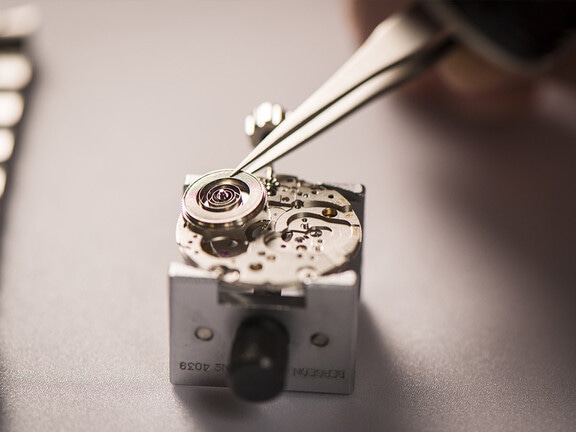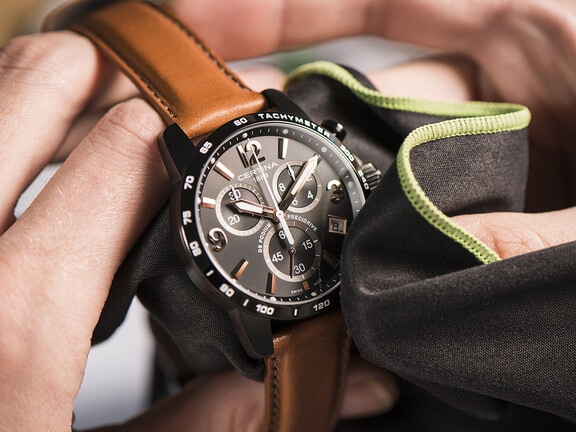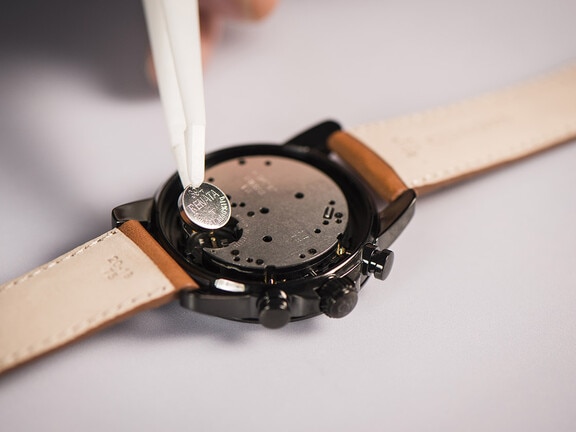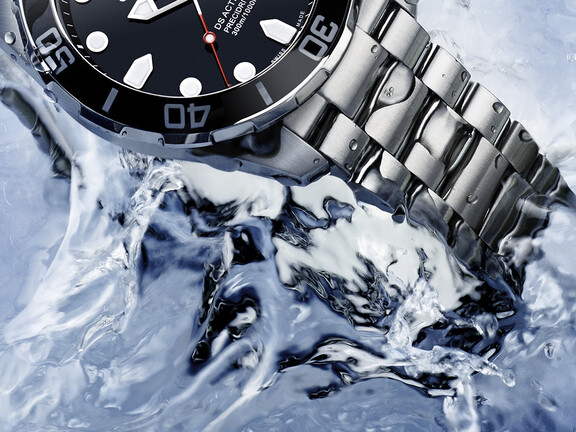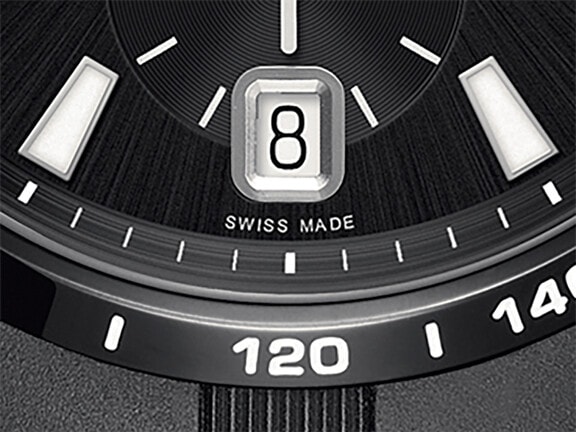Chemicals
Direct contact with solvents, cleaning products, perfume or other cosmetic products should always be avoided as they can permanently damage the watch strap, bracelet, case or seals.
Power reserve
The power reserve tells you how long a watch will continue to run without winding. Most mechanical watches, when fully wound, have a power reserve of between 38 and 42 hours – but this can vary widely depending on the movement and wearing habits. In addition to being highly accurate, the innovative Powermatic 80 has a power reserve up to 80 hours – almost twice as long as comparable models.
Keeping your watch clean
A soft toothbrush and mild soapy water can be used to clean stainless steel and titanium bracelets and all waterproof cases. The watch should then be carefully dried with a soft cloth.
Batteries
Quartz watches are extremely precise and long-lasting, and draw their energy from a small battery. This watch battery usually has a lifespan of between two and five years, depending on the type of watch, its size and functions. A chronograph, for example, uses more power than a three-hand watch.
Contact with water
The crown should always be fully pushed in or screwed into the case so that no water can find its way into the watch. For the same reason, the crown and push-buttons should never be operated under water. The watch should never be exposed to sudden changes in temperature (for example, contact with cold water after having been exposed to the hot sun for a long time) as this can permanently damage water resistance.
Setting the date
To set the date on most models is a simple procedure. The crown is gently pulled out to its first click/position and turned until the correct date is reached. The crown turning direction might be either clockwise or anticlockwise, depending on the model. Other watches, in particular certain quartz models with advanced or multifunction movements, use specific steps or shortcuts to achieve a change of date. Please refer to the applicable user's manual for your particular model.
Magnetic fields
Watches should never be exposed to strong magnetic fields such as loud speakers, magnetic locks, fridges or other electromagnetic appliances, as this can have a dramatic effect on their accuracy. If this should happen, a skilled watchmaker can demagnetize the watch.
Servicing intervals
As with all precision instruments, a watch should be regularly serviced by an officially certified customer service centre. The frequency with which a watch should be serviced depends on the model, climatic conditions and the habits of the wearer. As a rule of thumb, a general service is recommended every three to four years.
In addition, a watch’s water resistance should be regularly checked.

